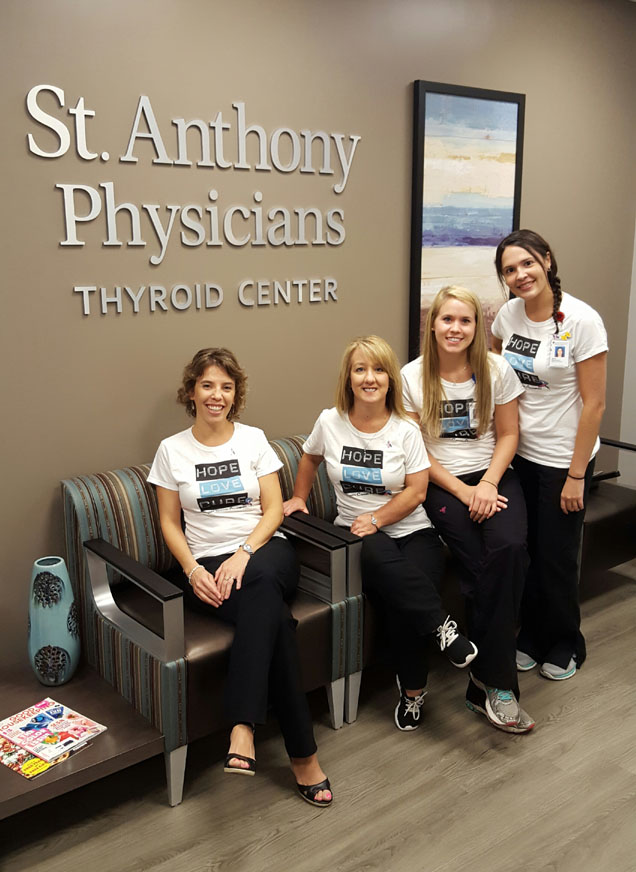
The American Cancer Society’s 2016 estimate for new thyroid cancer cases in the United States is 49,350 for women and 19,950 for men. “Women are two to three times more likely to develop thyroid cancer than men,” said Amanda La Greca, M.D., St. Anthony Physicians Group Thyroid Center.
Thyroid cancer can occur at any age, but about two-thirds of all cases are found in people between the ages of 20 and 55. There are four main types of thyroid cancer, Papillary, Follicular, Medullary and Anaplastic.
Papillary thyroid cancer is the most common type, making up about 70-80 percent of all thyroid cancer. “It tends to grow slowly and in general the prognosis is very good with a very low mortality rate. However, it can spread to the lymph nodes in the neck, which could cause a higher recurrence rate but not a higher mortality,” said Dr. La Greca.
According to Dr. La Greca, Follicular thyroid cancer makes up about 10-15 percent of thyroid cancer in the United States and tends to occur in older patients than does Papillary cancer. Follicular cancer is more likely to spread to blood vessels and other areas of the body, particularly the lungs and bones.
Medullary thyroid cancer makes up 5-10 percent of all thyroid cancers and is more likely to run in females and be associated with other endocrine problems.
Anaplastic thyroid cancer is the most advanced and aggressive thyroid cancer and is the least likely to respond to treatment. Fortunately, Anaplastic thyroid cancer is rare and is found in less than 2 percent of patients with thyroid cancer.
So what signs should we be looking for? “The most common early sign of thyroid cancer is an unusual lump, nodule or swelling in the neck. Most nodules on the thyroid are usually benign, but it’s important to have any unusual growths examined by a health care professional,” Dr. La Greca advised.
Diagnosis of thyroid cancer is typically made on the basis of an ultrasound-guided needle biopsy of a thyroid nodule, an outpatient procedure, or the cancer is confirmed by testing after the nodule is removed during surgery. Dr. La Greca performs her own ultrasound-guided needle biopsies in her office. “Although thyroid nodules are very common, less than one in ten contain a thyroid cancer,” she said.
We’ve learned the different types of cancer and what symptoms to look for, but what causes thyroid cancer? “Thyroid cancer is more common in people who have a history of exposure to high dose of radiation (especially during childhood), have a family history of thyroid cancer and are typically older than 40 years of age,” said Dr. La Greca. “However, for most patients we do not know the specific reason why thyroid cancers develop.”
Although thyroid cancer doesn’t always show symptoms, many tumors are found in the early stages when patients or their doctors find lumps or nodules in their throats. “Be sure your doctor includes a cancer related exam in your annual exam,” suggested Dr. La Greca.
For those who know thyroid cancer runs in their family, it’s important to be proactive. “If people in your family have had Medullary thyroid cancer, you and your children should have a blood test as early as possible to find out if the gene is detected that causes this cancer. If you or your children have the gene, your doctor may suggest surgically removing the thyroid gland to lower the risk of cancer,” she said.












